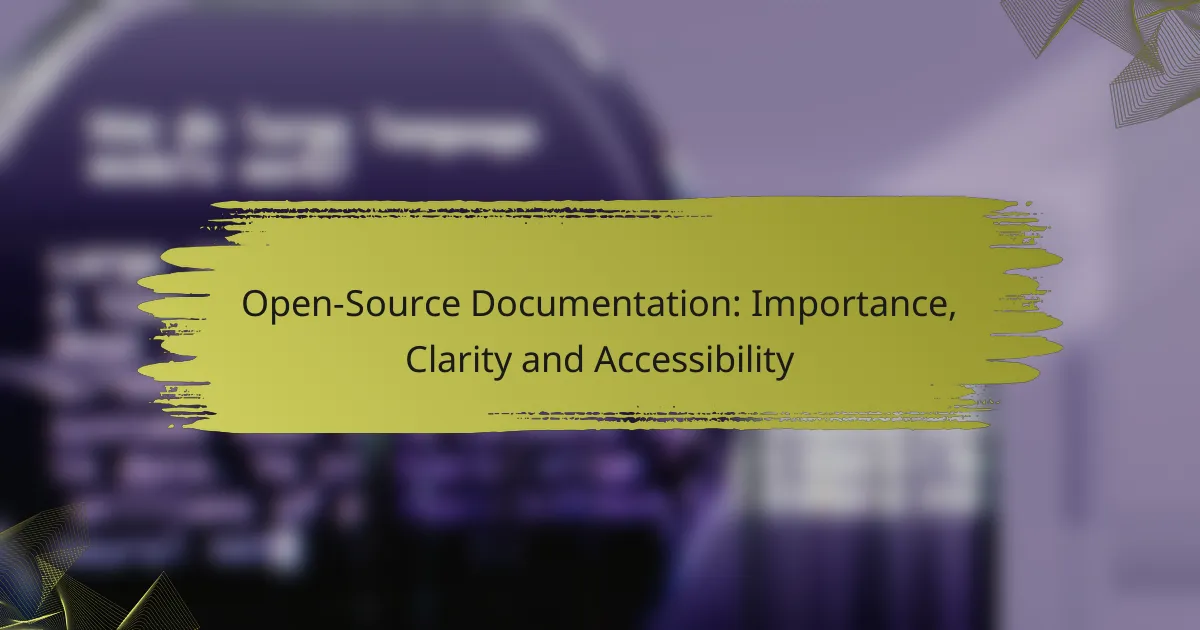Open-source code reviews are essential for maintaining high-quality software and fostering community collaboration. By implementing best practices such as clear guidelines, automated tools, and a focus on security and readability, teams can enhance code efficiency and maintainability. Utilizing platforms like GitHub and SonarQube further streamlines the review process, ensuring that contributions are both valuable and secure.
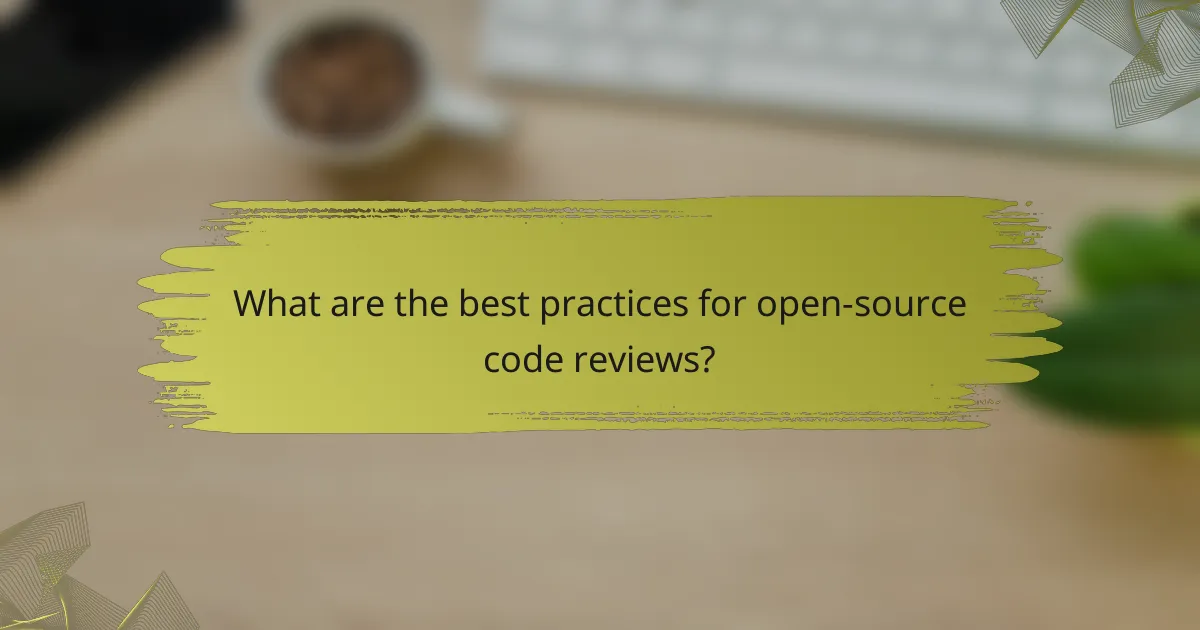
What are the best practices for open-source code reviews?
Best practices for open-source code reviews include establishing clear guidelines, utilizing automated tools, encouraging collaborative feedback, focusing on security vulnerabilities, and prioritizing code readability. These practices help ensure that code is efficient, secure, and maintainable while fostering a positive community environment.
Establish clear guidelines
Clear guidelines are essential for effective code reviews in open-source projects. They should outline the review process, expectations for reviewers, and criteria for approval. This clarity helps maintain consistency and ensures all contributors understand what is required for their submissions.
Consider creating a checklist for reviewers that includes aspects like coding standards, documentation requirements, and testing protocols. This can streamline the review process and reduce the likelihood of overlooking critical issues.
Utilize automated tools
Automated tools can significantly enhance the code review process by catching common issues before human reviewers even look at the code. Tools like linters and static analysis software can identify style violations, potential bugs, and security vulnerabilities quickly and accurately.
Integrating these tools into the development workflow can save time and allow reviewers to focus on more complex aspects of the code, such as architecture and logic. Aim to use tools that are compatible with your project’s programming languages and frameworks for maximum effectiveness.
Encourage collaborative feedback
Encouraging collaborative feedback fosters a supportive environment where contributors feel valued and engaged. This can be achieved by creating a culture where all team members, regardless of experience level, are invited to share their insights and suggestions during the review process.
Utilize platforms that facilitate discussions around code changes, such as pull request comments or dedicated chat channels. This openness can lead to more thorough reviews and a greater sense of community ownership over the codebase.
Focus on security vulnerabilities
Addressing security vulnerabilities during code reviews is crucial to protect the integrity of the software. Reviewers should be trained to identify common security issues, such as SQL injection, cross-site scripting, and improper authentication methods.
Incorporate security checks into your automated tools and encourage reviewers to stay updated on the latest security practices and vulnerabilities. Regular training sessions can help keep the team informed about emerging threats and best practices in secure coding.
Prioritize code readability
Code readability is vital for maintaining a healthy codebase, especially in open-source projects where many contributors may work on the same code. Clear, well-structured code is easier to review, understand, and modify, reducing the chances of introducing bugs.
Encourage contributors to write self-documenting code and adhere to established naming conventions. Providing examples of well-written code can serve as a reference for new contributors, helping them understand the importance of readability in collaborative environments.
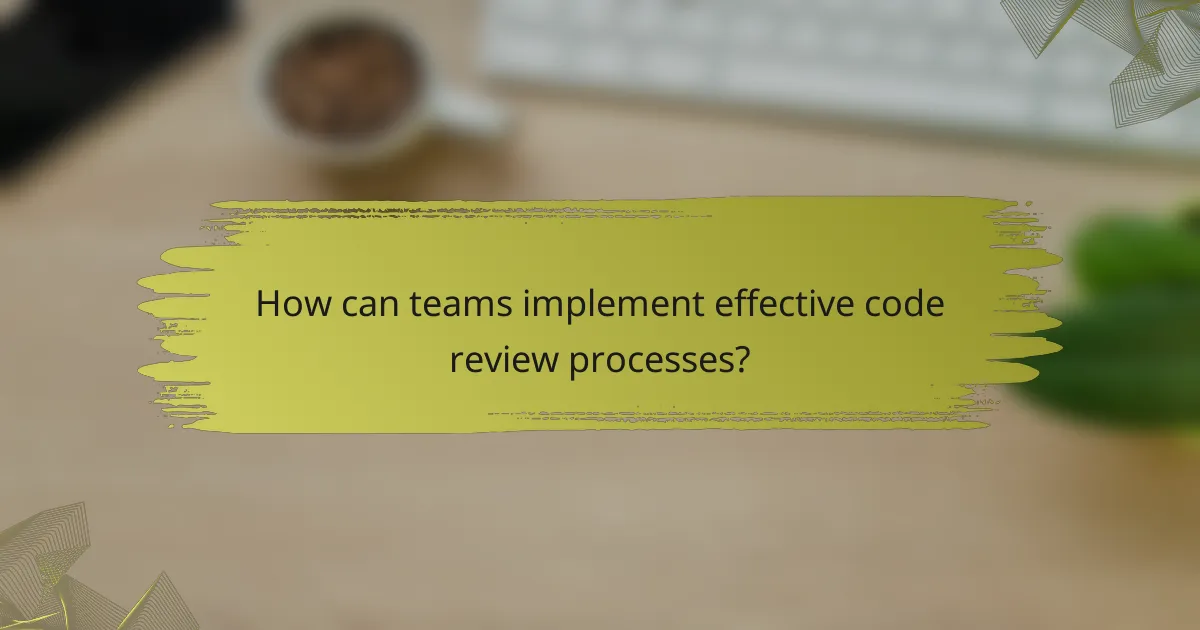
How can teams implement effective code review processes?
Teams can implement effective code review processes by establishing clear guidelines, defining roles, and utilizing tools that facilitate collaboration. A structured approach ensures that reviews are thorough, timely, and beneficial for both the code quality and team dynamics.
Define roles and responsibilities
Clearly defining roles and responsibilities within the code review process is crucial for accountability and efficiency. Assign specific reviewers based on expertise and familiarity with the codebase, ensuring that each team member knows their part in the review process.
For instance, designate a lead reviewer to oversee the process and provide feedback, while junior developers can focus on learning and contributing. This structure helps streamline reviews and fosters a collaborative environment.
Schedule regular review sessions
Scheduling regular code review sessions helps maintain a consistent workflow and keeps the team aligned. Aim for weekly or bi-weekly meetings where team members can present their code for review, discuss challenges, and share insights.
Consider using a time-blocking approach, allocating specific time slots for reviews to minimize disruptions. This practice not only enhances code quality but also encourages knowledge sharing among team members.
Use version control systems
Utilizing version control systems, such as Git, is essential for effective code reviews. These systems allow teams to track changes, manage different code versions, and facilitate collaboration among developers.
Encourage the use of pull requests to initiate reviews, as they provide a clear context for changes and allow for inline comments. This method enhances transparency and makes it easier to address issues before merging code into the main branch.
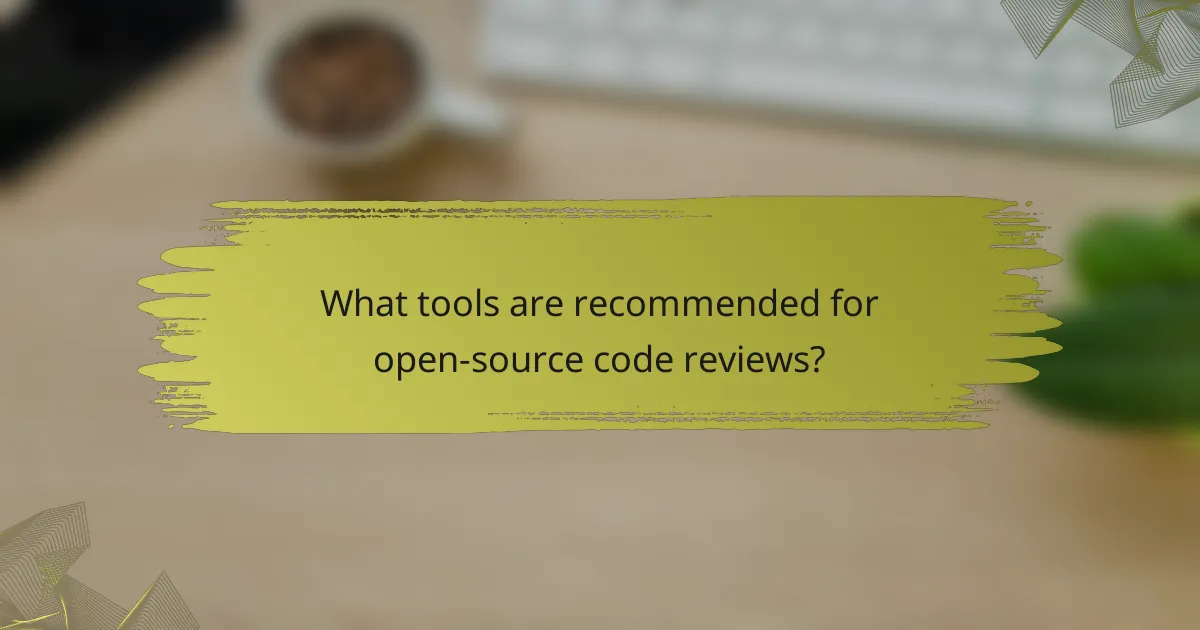
What tools are recommended for open-source code reviews?
For effective open-source code reviews, tools like GitHub, SonarQube, and CodeClimate are highly recommended. These platforms facilitate collaboration, ensure code quality, and assess maintainability, respectively.
GitHub for collaboration
GitHub is a leading platform for collaborative software development, making it ideal for open-source code reviews. It allows developers to submit pull requests, where others can review changes, comment, and suggest modifications.
Utilizing GitHub’s review features, such as code comments and approval requests, enhances communication among contributors. It’s essential to establish clear guidelines on how to conduct reviews to maintain consistency and efficiency.
SonarQube for quality analysis
SonarQube is a powerful tool for analyzing code quality and identifying vulnerabilities. It provides metrics on code smells, bugs, and security issues, helping teams maintain high standards in their projects.
Integrating SonarQube into your workflow can streamline the review process by automatically generating reports on code quality. Regularly reviewing these metrics can help teams address issues early and improve overall code health.
CodeClimate for maintainability
CodeClimate focuses on assessing the maintainability of codebases, providing insights into complexity and potential refactoring needs. It offers a maintainability score that helps teams prioritize technical debt and improve code structure.
Using CodeClimate can guide developers in writing cleaner, more maintainable code. Regular assessments can help teams identify areas for improvement, ensuring that the codebase remains robust and adaptable to future changes.

What metrics should be tracked during code reviews?
Tracking metrics during code reviews helps assess the effectiveness and efficiency of the review process. Key metrics include review time, the number of issues identified, and developer participation rates, which provide insights into the quality of code and team engagement.
Review time per pull request
Review time per pull request measures how long it takes for a code submission to be reviewed. Ideally, this should be kept to a few hours to a couple of days, depending on the complexity of the changes. Long review times can indicate bottlenecks in the process or lack of resources.
To optimize review time, set clear expectations for turnaround times and encourage reviewers to prioritize pull requests. Regularly assess the average review time to identify trends and areas for improvement.
Number of issues identified
The number of issues identified during code reviews reflects the thoroughness of the review process. Tracking this metric helps teams understand the quality of code being submitted and can highlight areas where additional training or guidelines may be needed.
Consider categorizing issues by severity—critical, major, and minor—to prioritize fixes effectively. A high number of issues may indicate a need for better coding practices or more comprehensive documentation.
Developer participation rates
Developer participation rates show how actively team members engage in code reviews. This metric can be calculated by tracking the number of reviews each developer conducts relative to the total number of reviews. High participation rates often correlate with better team collaboration and knowledge sharing.
Encourage all team members to participate in code reviews by fostering a culture of collaboration and providing incentives for active involvement. Monitor participation trends to ensure that all developers are engaged and contributing to the review process.
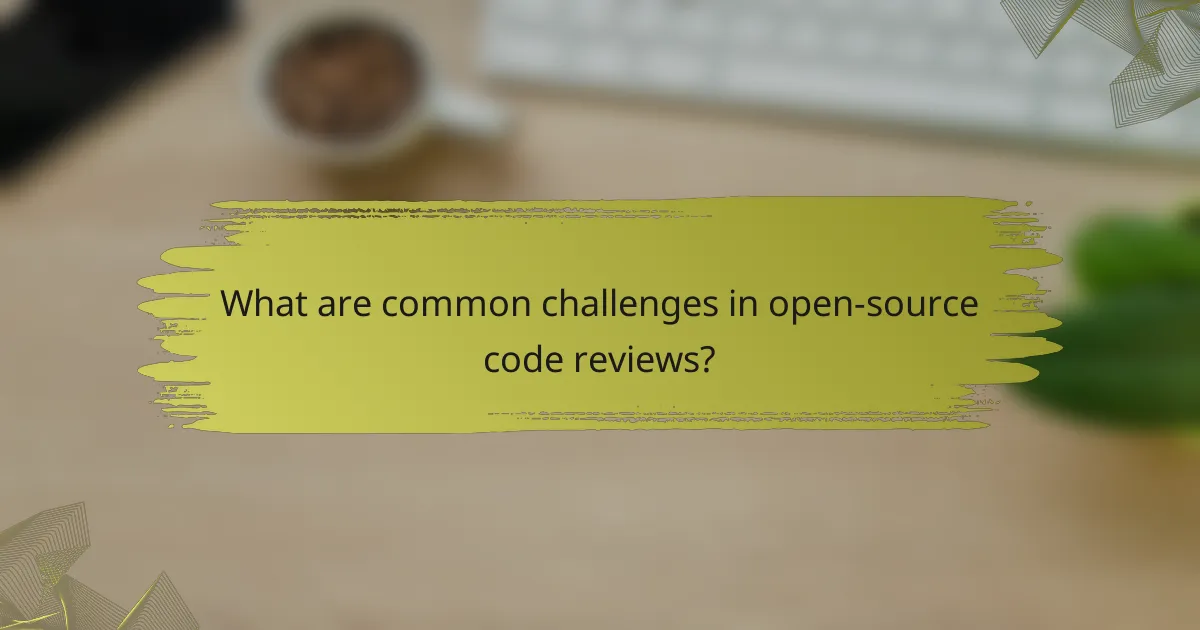
What are common challenges in open-source code reviews?
Open-source code reviews often face several challenges that can hinder their effectiveness. Key issues include time constraints, varying code quality, and differing levels of expertise among contributors.
Time constraints
Time constraints are a significant challenge in open-source code reviews, as contributors often juggle multiple responsibilities. Reviewers may have limited time to dedicate to each submission, which can lead to rushed evaluations and overlooked issues.
To manage time effectively, set clear expectations for review timelines. For instance, aim for a turnaround of a few days for smaller changes and a week or more for larger contributions. Utilizing tools that streamline the review process can also help save time.
Establishing a priority system for code reviews can further enhance efficiency. Focus on critical updates or security patches first, and encourage contributors to provide context in their submissions to facilitate quicker assessments.



